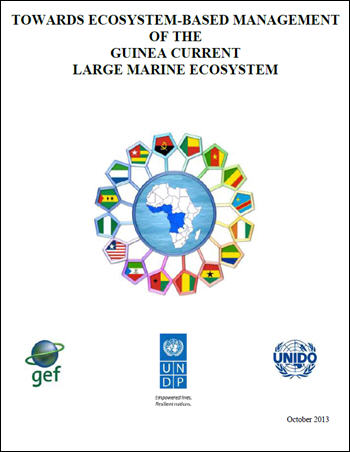Towards Ecosystem-Based Management of the Guinea Current Large Marine Ecosystem
The approach to ecosystem-based assessment and management of marine goods and services was introduced to Africa during the Global Environment Facility-United Nations Development Programme-United Nations Industrial Development Organization Gulf of Guinea project from 1995 to June 1999. With financial assistance from the Global Environment Facility (GEF), ministers responsible for the environment and marine resources, from six Gulf of Guinea countries—Benin, Cameroon, Ghana, Cote d'Ivoire, Nigeria, and Togo—committed their national resources in marine scientists, technicians, facilities, and in-kind services to conduct transboundary assessments of marine resources and support actions for resource recovery and sustainability.
From 2004 through 2012, based on the interests expressed by West and Central African countries, the Gulf of Guinea project was extended to a Strategic Action Programme Development/foundational capacity building project for the full extent of the Guinea Current Large Marine Ecosystem (GCLME) from Guinea Bissau in the northwest to Angola in the southwest, encompassing the coastal waters of 16 countries.
Since 2005, support for moving the 16 countries bordering the GCLME—Angola, Benin, Cameroon, Congo, Democratic Republic of Congo, Côte d'Ivoire, Ghana, Equatorial Guinea, Guinea, Guinea-Bissau, Liberia, Nigeria, São Tomé and Principe, Sierra Leone, and Togo—towards ecosystem-based assessment and management for sustainable development has grown. In the past decade, partnerships matured, and GCLME countries declared clarity of purpose in their country-driven request for a Strategic Action Programme implementation project for 2013 to 2017 leading toward sustainable development of ecosystem goods and services. This report summarizes accomplishments and catalytic activities in the movement towards sustainable development goals of the GEF-supported GCLME programme.
View the Table of Contents.
Download the complete report. 43 pages.

